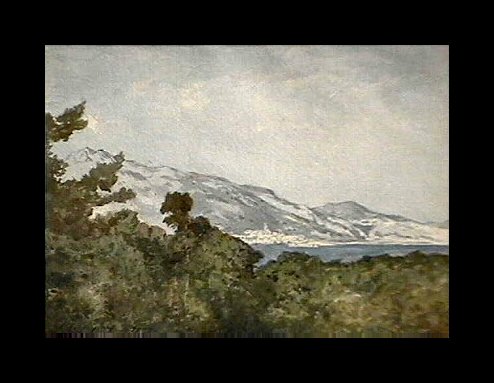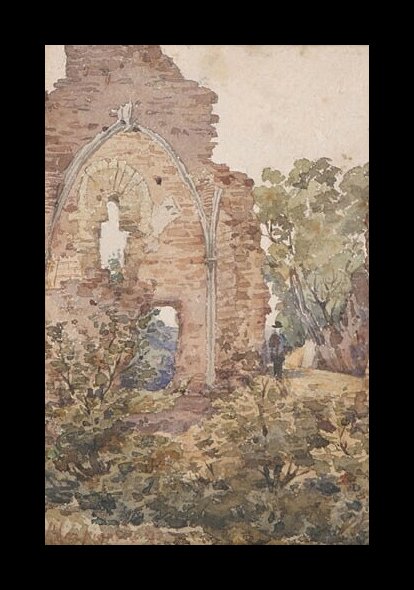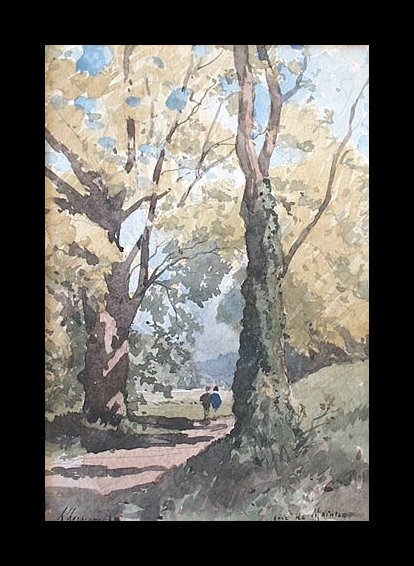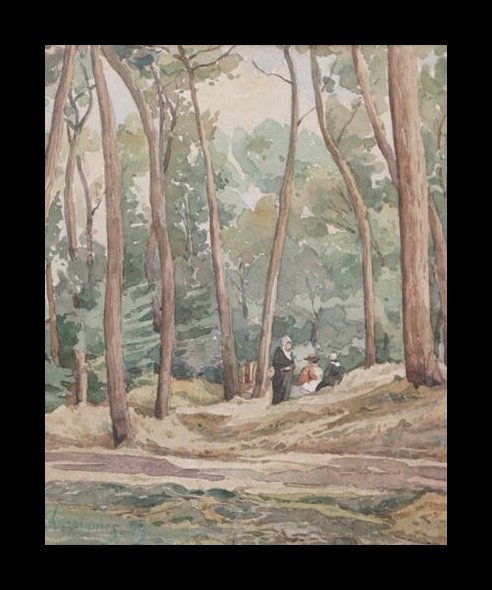Henri Harpignies (1819-1916)
Get a Harpignies Certificate of Authenticity for your painting or a COA for your Boucher drawing or print.
For all your Harpignies artworks you need a Certificate of Authenticity in order to sell, to insure or to donate for a tax deduction.
How to get a Harpignies Certificate of Authenticity is easy. Just send us photos and dimensions and tell us what you know about the origin or history of your Harpignies painting, drawing or print.
If you want to sell your Harpignies painting, drawing or print use our selling services. We offer Harpignies selling help, selling advice, private treaty sales and full brokerage.
We have been authenticating Harpignies and issuing certificates of authenticity since 2002. We are recognized Harpignies experts and Harpignies certified appraisers. We issue COAs and appraisals for all Harpignies artworks.
Our Harpignies paintings, drawings and print authentications are accepted and respected worlwide.
Each COA is backed by in-depth research and analysis authentication reports.
The Harpignies certificates of authenticity we issue are based on solid, reliable and fully referenced art investigations, authentication research, analytical work and forensic studies.
We are available to examine your Harpignies painting, drawing or print anywhere in the world.
You will generally receive your certificates of authenticity and authentication report within two weeks. Some complicated cases with difficult to research Harpignies paintings or drawings take longer.
Our clients include Harpignies collectors, investors, tax authorities, insurance adjusters, appraisers, valuers, auctioneers, Federal agencies and many law firms.
We perform Henri Harpignies art authentication, appraisal, certificates of authenticity (COA), analysis, research, scientific tests , full art authentications. We will help you sell your Henri Harpignies or we will sell it for you.


Henri Harpignies was a painter, engraver and watercolourist. He was born to a relatively wealthy family in Valenciennes who owned a sugar beet factory. He also produced a small number of lithographs. He is best known for his talent in landscape painting. He took drawing lessons at a young age, and won many drawing prizes when at school. At first, he did not follow his vocation. He followed the wishes of his family, and entered the family business. At the age of twenty seven he convinced them to let him follow an artistic career, and entered the studio of Jean Achard. Jean Archard was a painter and engraver. He was also a good friend of Jean-Baptiste Camille Corot.
He traveled to Holland, Brussels and Flanders with Jean Achard, studying and painting. Jean Achard is said to have given Harpignies a good grounding in the technique of draughtsmanship, and this is reflected in his work. On his return to France he left to Italy, and met with some of the artists of the Villa Medici in Rome. It is said that it was on this trip to Rome that he produced his first watercolours.
On his return he produced a number of paintings of children in landscape settings. He was influenced very much by the Barbizon school, and made an effort to study their work. He also greatly admired Corot, although he was never a student of his. He began to paint in the area surrounding the Forest of Fontainebleau, and he became friends with Corot. He exhibited at his first Salon in 1853.

In 1859, he established a studio in Paris, and had an association with Corot, and Jean Leon Gerome. The Canadian artist J.W. Morrice was a student of his. In 1860, Harpignies and Corot went on a long painting trip to Italy. Italy, and especially Rome, were to be an inspiration to him all his life, and he was to return there on a number of occasions. In 1866, he won a Gold Medal at the Salon for a painting entitled, ‘Evening in the Countryside of Rome,’ and the French state also purchased some of his work. He was a successful artist who made a good living, and was generous to young struggling artists.
Throughout his whole career he traveled, and painted in different regions of France, such as the Pyrenees, and the Auvergne. It is said that the work of Harpignies, and particularly his landscapes were of a Conservative nature, but that he brought them to life with bold colours. He was particularly interested in Impressionism, but preferred to limit this to an intellectual interest, as in his artistic life he remained faithful to his conservative style.
He spent his summers in Herisson, in the Bourbonnais region of France. He led a group of artists there, and they came to be known as the, ‘School of Herisson.’ It is said that his best works were produced in Herisson, and also the Auvergne region of France.
He is often referred to as being a member of the Barbizon school of painters, due to the influence that Corot had on his work. In his eulogy, Harpignies was called the, ‘Michelangelo of Trees,’ in reference to his work, and his special interest in trees. His paintings can be seen in museums all over the world, including the Hermitage Museum in St Petersburg, the National Gallery of London and the Metropolitan Museum of Art in New York.



Reviews
1,217 global ratings
5 Star
4 Star
3 Star
2 Star
1 Star
Your evaluation is very important to us. Thank you.
